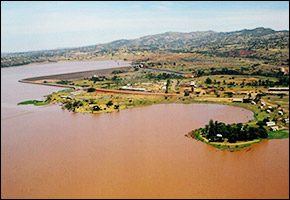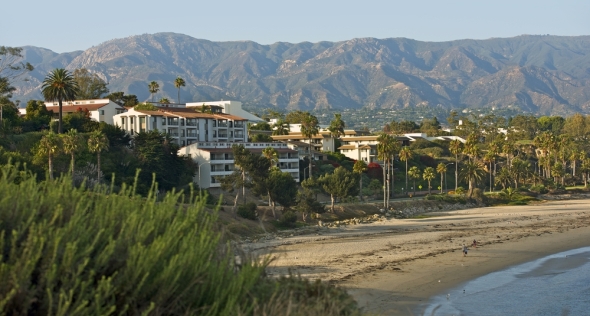Texas Utilities Use Restrictions, Not Prices, To Cope With Water Shortages
The preference for government mandates reinforces the idea that water is not like other goods.
On August 15, Houston’s mayor announced restrictions on its outdoor water use, and the city joined 795 other Texas water systems that are cutting down on water consumption in response to a persistent 10-month drought in the state.
The conservation mandate is the latest in a series of drought policies in Texas that have instituted water restrictions instead of price mechanisms, and raised questions over the most effective ways to manage water shortages.
Roughly 11 percent of the Texas water systems have mandatory restrictions in effect, and another 6 percent have voluntary constraints, amid the state’s driest spell in recorded history, according to the Texas Commission on Environmental Quality.
In Houston, residents must follow a two-day-a-week lawn-watering schedule, mornings and nights only, in accordance with the city’s Stage Two conservation plan.
Meanwhile, Midland, whose supply reservoir is only a quarter full, has seen a 20 percent cut in its allocation from the Colorado River Municipal Water District. As a result, the city in western Texas, which has received less than an inch of rain since October, has limited lawn watering and car washing to twice a week, and prohibited the use of ornamental fountains (unless the fish would die).
The measure is only the second stage of a five-stage water conservation plan, which might see Midland cut off all landscape irrigation, car washing and pool filling, and discontinue connecting new users to the system if rains do not return by next year.
Tell Us What To Do
When it comes to supply shortages, water departments usually respond with restrictions. Except in the most extreme circumstances, utilities and their customers prefer the dictates of government to the hand of the market, according to Sheila Olmstead, an economist and a fellow at Resources for the Future, a Washington, D.C.-based center for environmental policy.
“There’s a precedent for market-based approaches in public policy, especially for pollution control,” Olmstead told Circle of Blue. “But we haven’t gotten to that point with natural resources where pricing is a commonly used tool.”
In Texas, for example, San Antonio and Dallas have price increases written into their drought response plans, but neither city has ever had to levy them.
Yet, according to Olmstead, a market-based policy—raising the price of consuming water—would be much less costly than government mandates and would achieve the same net result.
In strictly economic terms, it is more expensive for water departments to monitor, enforce and maintain restrictions than to use the water metering system already in place. With restrictions, Olmstead said, water sales—the primary revenue source—drop off just as repairs are needed for water main breaks. Often, utilities would have to raise rates coming out of a drought to make up for the revenue lost to conservation.
Price increases, on the other hand, allow a utility to retain that revenue while still reducing water use by the same amount. If they exceed a regulated maximum, revenues can be returned in a rebate to the city’s poorest residents, who would be most affected by higher prices.
Customers also lose from the restriction regime, Olmstead added. Restrictive measures would in effect prohibit those who are willing to pay more for their outdoor water use from spending on their preferences. According to a Resources for the Future policy commentary by Olmstead and Erin Mansur, an economist at Dartmouth College, large cities are losing millions of dollars per summer because of water restrictions.
Case in Point
The touchstone case for drought pricing happened two decades ago in Santa Barbara, Calif., when the city was transitioning to block pricing to better match supply with demand.
Block pricing divides water use into consumption chunks, with the price per unit of water increasing as the use grows.
When projections in the first months of 1990 showed a water supply deficit of 45 percent for the year and 80 percent for subsequent years if dry conditions persisted, the Santa Barbara water department made the consumption blocks smaller and significantly raised rates. Bills for low-volume users were largely unaffected, while the price in the highest block increased nearly ten-fold, all in an attempt to rein in demand while keeping basic needs affordable.
Santa Barbara also adopted mandatory restrictions on lawns, pools and fountains. According to the water department’s post-drought assessment, the city wanted to spread the burden across all customers, not just the ones who couldn’t afford the higher prices.
Olmstead said this is one reason why utilities prefer mandatory restrictions: they create perception of social solidarity, since all users suffer scorched turf.
Statements from public officials suggest the same. In the 2007 drought in the Southeast, Georgia’s governor called on the state’s citizens to “make their dry lawns and dirty cars a badge of honor.” By doing so, they could “collectively help to ensure that our water supply is sufficient.”
The South Carolina Water Plan also vows to manage water shortages in a way “that all users would share the burden.”
Perhaps this is a case in point for Midland, where tensions are starting to rise between those who are on city water and are subjected to mandatory restrictions, and those with private wells, which are not regulated.
“Neighbors are getting mad at their neighbors and so it’s less the city getting engaged, it’s creating tension in the neighborhoods,” Midland City Councilman John James told KOSA, the CBS affiliate in West Texas.
Sources: Resources for the Future, Texas Commission on Environmental Quality, City of Houston, City of Santa Barbara post-drought assessment, City of Midland, KOSA, South Carolina Water Plan
Brett writes about agriculture, energy, infrastructure, and the politics and economics of water in the United States. He also writes the Federal Water Tap, Circle of Blue’s weekly digest of U.S. government water news. He is the winner of two Society of Environmental Journalists reporting awards, one of the top honors in American environmental journalism: first place for explanatory reporting for a series on septic system pollution in the United States(2016) and third place for beat reporting in a small market (2014). He received the Sierra Club’s Distinguished Service Award in 2018. Brett lives in Seattle, where he hikes the mountains and bakes pies. Contact Brett Walton










I’ve been trying to conserve water for some time now. Knowing exactly how much water I used was very important to me, especially since I have a garden. The easy step I took was to measure the amount of water I used with my hose. Although this seems obvious, it actually has made a huge difference and helped me conserve. Also, I can now water the same consistent and appropriate amount to my plants. The product I’m using is seen here. There are other products on the market that do the same thing, but this one was relatively cheap, and it gets the job done.
Great read and great point. I strongly believe PRICE is our most powerful water conservation tool. If water is as precious as we claim, it should be priced accordingly. Conservation will follow.
The argument of residential water restriction would make more sense if the city and commercial users were also restricting their use. In College Station, the commercial and city areas are lush and green (since their charge rates are lowest compared to residential rates). It’s a double standard to then expect homeowners to restrict their use with the argument of limited resources when commercial and government users don’t have to.
From personal experience of living in TX, going through droughts year after year in various areas of the state, and working in the industry, I see both sides of this argument. I truly feel that the best way for conservation is a mix of both. Stage 1 restrictions should include an increased fee, AND water restrictions. It makes no sense to wait until our waters have dissipated with no relief in sight for us to start getting serious. Universities and cities should be the first to start conserving over the people. The community leaders should be steeping up and LEADING the community by example. An increase in fines for those who break the restrictions should also be included. Freshwater water is not only a limited, non renewable source (yes I realize there is desal but currently that isn’t an option for large scale production), it’s also our life source. Without water, there is no life.